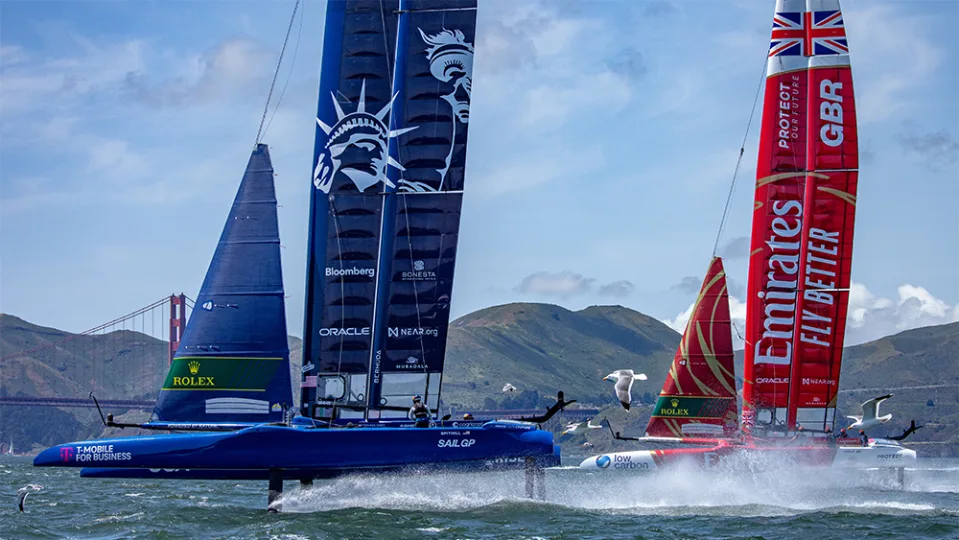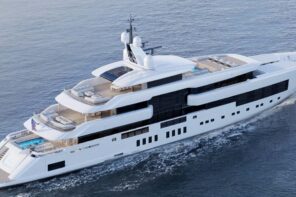From the serene waters of weekend cruises to the exhilarating world of competitive racing sailboats, the maritime industry has witnessed a remarkable transformation with the advent of foiling technology. Foiling yachts have emerged as the latest sea change, pushing the boundaries of speed and innovation on the water. One of the most prominent examples of this revolutionary technology is the SailGP F50 race boat, a vessel that epitomizes the high-octane thrills of sailing on foils.
The U.S. team’s skilled crew, led by driver Jimmy Spithill, nimbly shifts positions between the twin hulls while the catamaran soars six feet above the waves, propelled by its wings—massive, 95-foot-high sails designed as airfoils. In just moments, the boat accelerates to astonishing speeds, reaching three times the velocity of the wind. The F50 is not just a vessel; it’s a techy, edgy, and adrenaline-pumping experience, pushing the limits of human capability.
The SailGP F50 is a testament to the relentless pursuit of excellence in naval architecture. Developed as an advanced version of the AC50 (the 50-foot catamaran raced in the 2017 America’s Cup), the F50 is faster and more agile, capable of reaching speeds exceeding 60 mph. The key to its astonishing performance lies in the innovative use of thin carbon-fiber “L” foils, which provide unparalleled strength and stiffness at a fraction of the weight of traditional materials. However, this cutting-edge design also comes with inherent risks, demanding the utmost precision and skill from its crew to maintain stability during high-speed maneuvers.
The F50 represents sailing at a level never seen before—a perfect fusion of state-of-the-art technology and unparalleled athleticism. Piloting this high-speed foiling yacht requires a level of skill and bravery that elevates the sport to new heights. The thrill of being on an F50 during its race is unparalleled; it’s an experience that captivates the senses and leaves a lasting impression on anyone fortunate enough to be a part of it.
Foiling technology is not exclusive to racing catamarans; it has begun to revolutionize the world of motorboats as well. Foils are being incorporated into various watercraft, including e-foiling boards, jet skis, and midsize motoryachts. Their unique ability to lift the vessel above the water’s surface significantly reduces drag, leading to increased energy efficiency and higher speeds.
One example of this foiling revolution is the Navier N30, a nine-passenger electric powerboat that effortlessly glides above the water on three carbon blades. The N30 boasts an active foiling system controlled by sophisticated sensors that adjust the flaps 50 times per second, ensuring a smooth and stable ride for passengers. Not only does the N30 offer an unprecedented level of comfort, but it also provides impressive energy efficiency, making it an attractive option for environmentally-conscious boaters.
However, like any groundbreaking technology, foiling is not without its challenges. The Achilles’ heel of this impressive innovation lies in its software. Instances of unexpected retraction of foils due to software glitches have been reported, requiring remote intervention for resolution. Ensuring robust and reliable software is crucial to ensuring a safe and enjoyable experience for boaters.
Despite these challenges, foiling powerboats have caught the attention of boating enthusiasts and industry experts alike. High-volume production builders and even superyacht yards are exploring foiling technology, recognizing its potential to revolutionize the marine industry. Rising energy prices may further drive the adoption of foiling powerboats, given their energy-efficient nature compared to traditional deep-V powerboats.





